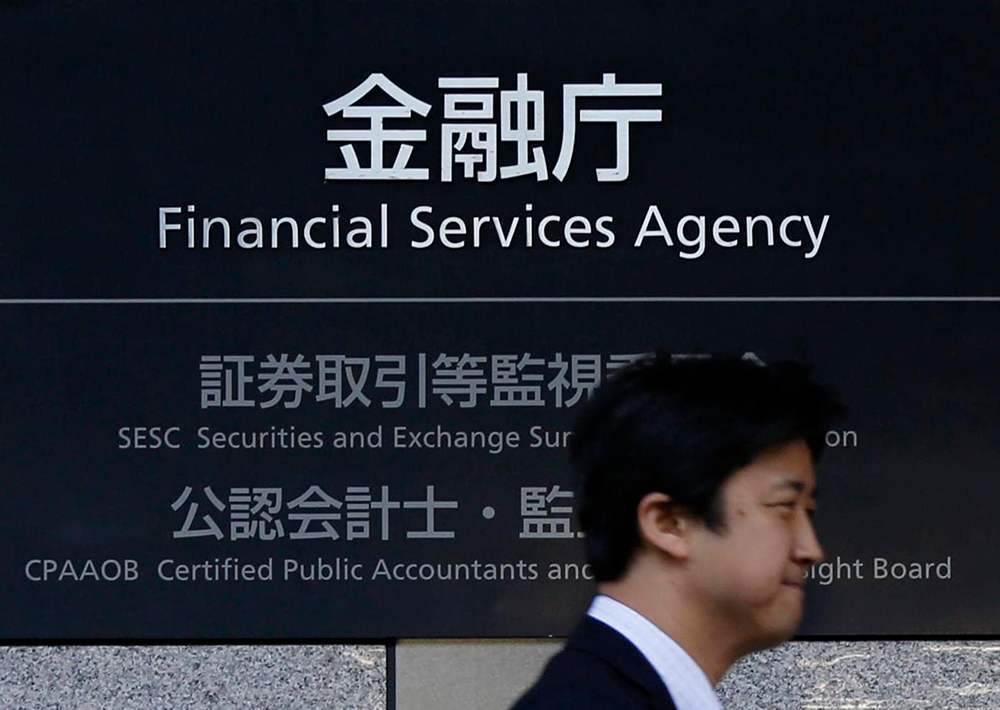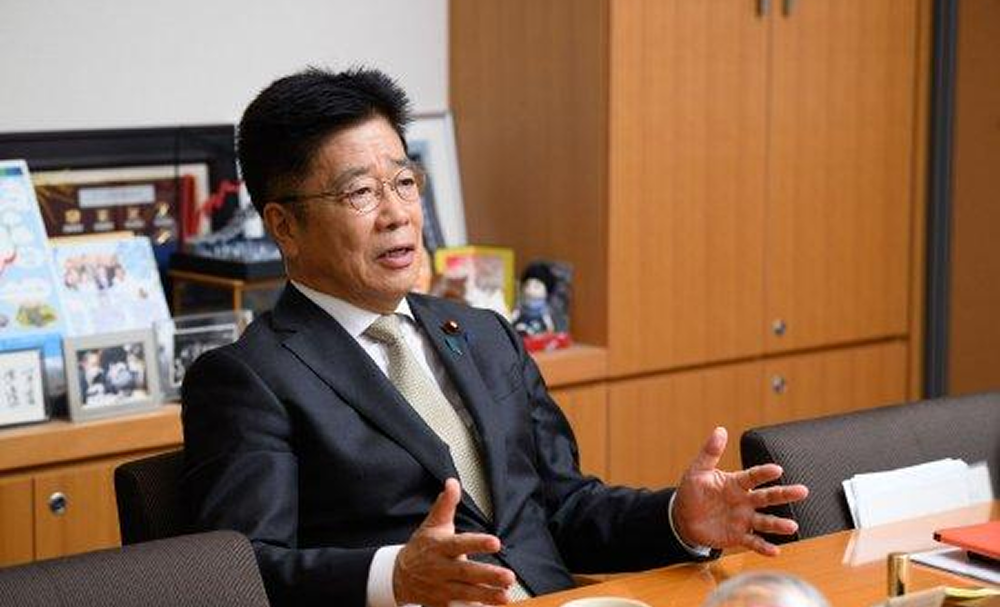The Financial Services Agency (FSA) of Japan is actively promoting significant institutional reforms in the field of crypto assets and stablecoins, aiming to create a more robust and innovative digital asset development environment based on lessons learned from international experiences. According to the latest report from Coinpost, the Director of the Market Division, Yuji Obuchi, publicly unveiled a comprehensive reform plan today, based on discussions from last month's Financial Review Council working group. The core of this plan is to strengthen user asset protection while opening up independent development paths for crypto asset intermediary businesses and adjusting the regulatory framework for stablecoins, seeking the best balance between safeguarding user rights and stimulating market vitality.

"Domestic Asset Holding Order": Learning from the FTX Incident to Build a User Asset Safety Defense Line
One of the most eye-catching measures in this reform plan is the proposal to introduce a "Domestic Asset Holding Order" for crypto asset exchanges. This measure directly addresses the user asset safety risks exposed by the bankruptcy of the large crypto asset exchange FTX in 2022. The FTX incident not only led to significant losses for many users but also triggered profound reflections globally on the operational models of crypto asset exchanges and regulatory loopholes.
The core of the "Domestic Asset Holding Order" is to require crypto asset exchanges registered in Japan to store a portion or all of their clients' assets within Japan. This move aims to enhance the accessibility and effectiveness of regulation. In the event of a risk incident at an exchange, Japanese regulatory authorities can intervene more swiftly and directly to ensure the safe recovery of user assets. Compared to cross-border asset recovery, domestic holding will undoubtedly significantly reduce the difficulty and cost of user rights protection, greatly enhancing the safety coefficient of user assets.
It is worth noting that this order does not simply require all assets to be stored domestically but emphasizes "certain assets." This means that regulatory authorities will set specific domestic holding ratios or amounts based on factors such as the size, business model, and risk status of the exchange. This flexible regulatory approach can effectively enhance the level of user asset protection while avoiding excessive restrictions on the operation of exchanges, ensuring the healthy development of the industry.

Establishing Crypto Asset Intermediary Business: Easing Regulations for Innovation and Stimulating Market Vitality
For a long time, the regulatory framework in Japan's crypto asset sector has imposed certain constraints on innovative businesses. For example, institutions that only provide trading matching and other intermediary services have also been required to register according to the standards of comprehensive exchanges, which undoubtedly raises the industry threshold and limits market diversification. To break this situation, the FSA's reform plan proposes to establish an independent category for "crypto asset trading intermediary businesses."
This means that in the future, institutions focusing on trading matching, clearing, and other services will be subject to more streamlined and efficient regulatory rules, without having to bear the same compliance burdens as comprehensive exchanges. This move is seen as an important signal from Japanese regulators to "ease" regulations for innovative business models, lowering market entry barriers. The industry generally believes that this will attract more companies with technological advantages and user bases, especially internet giants in gaming and communication, to accelerate their entry into the market, injecting new vitality into it. In the future, users may see more new application scenarios based on crypto assets emerge, such as convenient trading of virtual assets within games or using cryptocurrencies for daily payments.
Adjusting the Regulatory Framework for Stablecoins: Enhancing Flexibility of Supporting Assets While Balancing Safety and Efficiency
As an important innovation in the field of crypto assets, stablecoins have garnered significant attention regarding their development prospects. However, how to effectively regulate them to ensure safety and promote application has been a common challenge faced by regulatory authorities worldwide. In this reform, the FSA is also focused on optimizing the regulatory framework for stablecoins, with the core aim of adjusting the types of supporting assets for stablecoins to enhance their flexibility.
It is reported that the FSA is studying the possibility of allowing stablecoins to use a more diverse range of "high-security assets" as reserves, such as short-term government bonds and time deposits. This move aims to address the issue of limited types of supporting assets for stablecoins under the existing framework, which somewhat restricts their issuance and application. Short-term government bonds and time deposits are known for their low risk and high liquidity, and are believed to effectively safeguard the stability of stablecoin value while enhancing asset management efficiency. By optimizing the regulatory framework for stablecoins, the FSA hopes to further unleash the application potential of stablecoins in areas such as payments and cross-border remittances, achieving a dynamic balance between safety and efficiency.
Minister Kato's Outlook: User Protection and Innovative Development Go Hand in Hand
Japan's Finance Minister Shunichi Kato has publicly stated his hope that this institutional reform will create an environment where users can safely use convenient remittance and payment services. He emphasized that the goal of this reform is to balance user protection with promoting innovation, striving to find the best balance between the two.
Minister Kato's statement clearly reflects the Japanese government's overall approach to the development of crypto assets and stablecoins. On one hand, the government places a high priority on user asset protection, prioritizing risk prevention; on the other hand, the government also fully recognizes the potential of crypto asset technology in financial innovation and the development of the digital economy, hoping to guide the healthy and orderly development of the industry through a reasonable regulatory framework.

Future Outlook: Bill Revisions and Implementation of Reforms
The FSA plans to concretize these reform proposals in the near future and separately formulate the "Partial Revision Bill of the Trust Business Act" and the "Partial Revision Bill Related to the Fund Settlement Act" to ensure that the reform measures can be smoothly implemented.
It is noteworthy that on February 10, news emerged that the FSA intends to classify crypto assets as financial products. This move is seen as an important signal of Japan strengthening its regulation of crypto assets. If crypto assets are officially defined as financial products, it will mean that their regulatory standards and legal responsibilities will be further elevated, aligning them with traditional financial markets.
In-Depth Analysis
1. Upgrading User Protection and Challenges
The "Domestic Asset Holding Order" represents a significant upgrade in user protection in Japan. Reflecting on the 2022 FTX bankruptcy incident, Japanese investors suffered heavy losses, highlighting the difficulties of cross-border asset recovery. According to CoinGecko's 2023 data, Japan was one of the regions most severely affected by the FTX collapse. The "Domestic Asset Holding" aims to improve regulatory efficiency and reduce the cost of rights protection. Bloomberg analysts believe that this move can effectively enhance the FSA's regulatory capabilities over exchanges. However, how to scientifically define the "certain proportion" of domestic assets poses a challenge. A ratio that is too high may affect the operational efficiency of exchanges, while a ratio that is too low may limit the level of protection. Industry experts suggest that regulators need to conduct precise calculations and dynamically adjust the ratio. Additionally, domestic holding is not a panacea; internal management and hacker risks still exist. A report from security company CertiK indicates that even leading exchanges face ongoing security threats. Therefore, user protection needs to build a multi-layered system covering operational management, risk control, information disclosure, and more.
2. Opportunities and Regulatory Arbitrage Risks of Independent Intermediary Business
The independent establishment of crypto asset trading intermediary businesses is an innovative move in Japanese regulation, easing restrictions for innovative business models. McKinsey Consulting predicts that the market potential for crypto asset intermediary services is enormous, especially in gaming and communication sectors. Japan is home to large gaming and communication companies like Sony and NTT, which are expected to become active participants in the new business models. Japanese gaming industry analysts point out that NFT trading and crypto payments are new growth points for the gaming industry. However, caution is needed regarding regulatory arbitrage. With lower regulatory standards for intermediary institutions, insufficient regulation may lead to the phenomenon of "fake intermediaries, real exchanges." Financial regulatory lawyers emphasize that the FSA needs to clarify business boundaries, refine rules, and strengthen daily supervision to ensure the healthy development of new business models.
3. The Balancing Act of Stablecoin Regulation: The Game Between Innovation and Prudence
The adjustment of the stablecoin regulatory framework reflects Japan's balance between innovation and prudence. Allowing short-term government bonds and time deposits as supporting assets aims to enhance the flexibility and application scenarios of stablecoins. Currently, mainstream stablecoins in the market, such as USDT and USDC, have complex reserve asset compositions, which carry certain risks. The Bank for International Settlements (BIS) report points out that some stablecoin reserves lack transparency, which may trigger systemic risks. Economists believe that high-security assets like short-term government bonds can effectively enhance the stability of stablecoins. However, even government bonds and deposits are not absolutely safe in extreme market conditions, and there is still a need to strengthen the risk management and early warning mechanisms of issuing institutions.
4. The Far-Reaching Impact of Classifying Crypto Assets as Financial Products
Classifying crypto assets as financial products is a key step towards the maturity of Japan's crypto asset regulation. The International Organization of Securities Commissions (IOSCO) is also promoting the inclusion of crypto assets in the financial regulatory framework. The classification as financial products elevates regulatory standards and legal status, laying the foundation for the integration of crypto assets into the traditional financial system. A report from PwC indicates that financial product regulation will increase compliance costs, which may suppress the development of small exchanges and innovative projects. Crypto industry analysts believe that excessive regulation may stifle market vitality. Therefore, the FSA needs to formulate detailed rules under the classification of financial products, balancing regulatory intensity with market innovation.
5. Global Insights from Japan's Crypto Asset Regulatory Reform
As a pioneer in crypto asset regulation, Japan's policy adjustments have global demonstration significance. The Financial Stability Board (FSB) is also calling for enhanced global cooperation in crypto asset regulation. Japan's reform plan seeks a balance between user protection, innovative development, and risk prevention, providing a reference for other countries. The International Monetary Fund (IMF) has recognized Japan's exploration in crypto asset regulation. Especially after the FTX incident, the global call for regulation has surged, and Japan's reform attempts will contribute experience to building a global crypto asset regulatory framework.
The comprehensive reform plan of the FSA reflects its regulatory thinking, transitioning from early innovation embrace to a balance between risk and innovation. Japanese financial regulatory experts believe that the FTX incident was a key factor prompting the shift in Japan's regulatory policy. It is commendable that Japan is not merely tightening regulations but is seeking a balance between user protection and industry innovation, as seen in the establishment of independent intermediary businesses and the adjustment of the stablecoin regulatory framework, both demonstrating support for innovation. The concept of a "regulatory sandbox" is worth international reference.
However, the path of reform is fraught with challenges. How to balance user protection, industry innovation, and regulatory efficiency requires ongoing exploration. Global cooperation in crypto asset regulation is crucial. The G20 Financial Stability Board is also promoting global cooperation in crypto regulation. Whether Japan's experience can be promoted globally remains uncertain.
The comprehensive reform plan of the FSA is a milestone initiative, reflecting on past experiences and actively responding to future trends. By strengthening user protection, promoting innovation, and adjusting frameworks, Japan is expected to build a healthier and more robust crypto asset ecosystem, contributing to the global digital economy. The road to reform is full of challenges, and balancing the interests of all parties to achieve regulatory goals requires the joint efforts of regulatory authorities, the industry, and users.
Disclaimer: The above content does not constitute investment advice.
AiCoin Official Website: www.aicoin.com
Telegram: t.me/aicoincn
Twitter: x.com/AiCoinzh
Email: support@aicoin.com
Group Chat: Customer Service Yingying、Customer Service KK
免责声明:本文章仅代表作者个人观点,不代表本平台的立场和观点。本文章仅供信息分享,不构成对任何人的任何投资建议。用户与作者之间的任何争议,与本平台无关。如网页中刊载的文章或图片涉及侵权,请提供相关的权利证明和身份证明发送邮件到support@aicoin.com,本平台相关工作人员将会进行核查。



